Bio-Art Illumination: Marta de Menezes Visits Stamps
When art and design students first hear that they’re going to make creative work using gene manipulation techniques, they may imagine using gadgetry straight out of a science fiction movie, “whirring machines that bleep and bloop,” as Stamps Associate Professor and MFA Program Director Osman Khan put it.
In reality, the petri dishes and vials used in genetic modification is much more straightforward. According to Khan, “this new, high-tech technology is just a little flask, which allows you to cut DNA.”
Khan spoke from recent experience at the conclusion of a three-day Stamps workshop, where participants used CRISPR-Cas9 technology to genetically modify bacteria to serve as media for artwork. Dean Guna Nadarajan invited visiting artist Marta de Menezes to Stamps to lead the session on Contemporary Art and Life Sciences in late March and early April 2017.
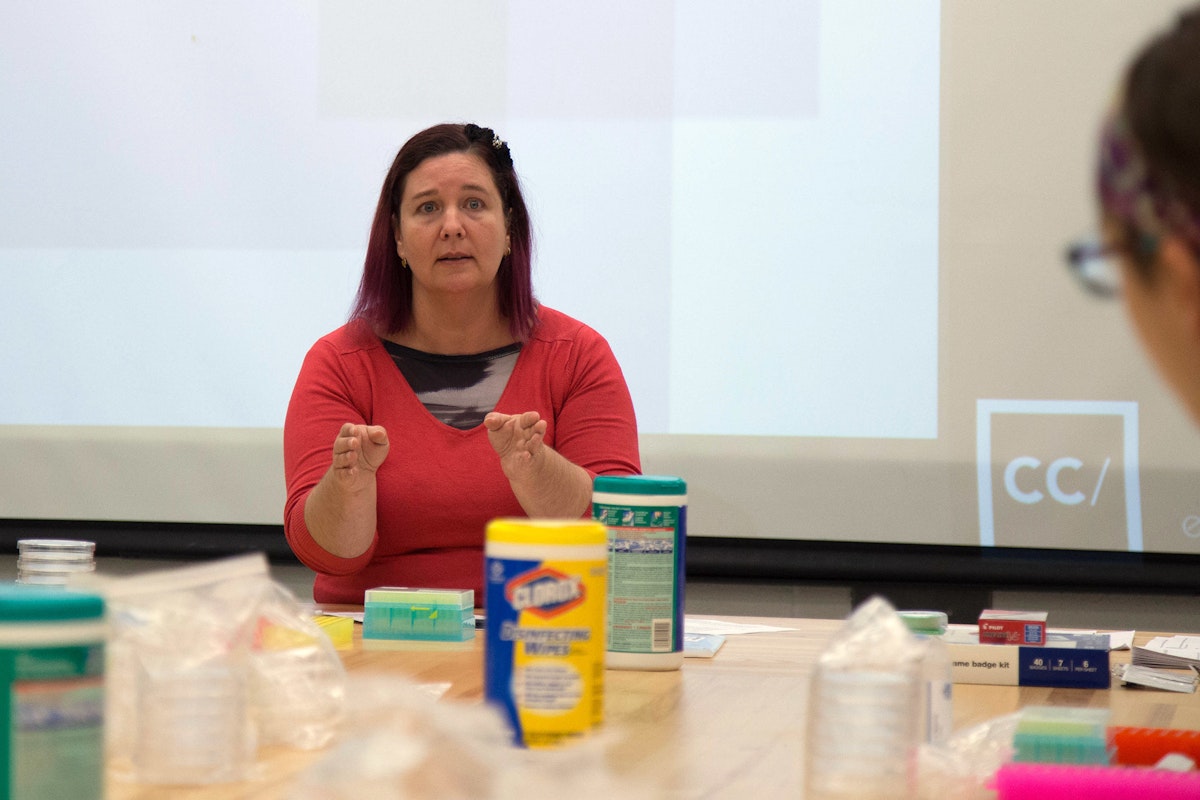
To oversimplify it, CRISPR is a genetic modification technique involving a molecule that carries precise instructions on where to cut a section of DNA and replace it with a new one. It's been a hot topic in science and the media in the last several years because of how precisely it allows scientists to modify genes, and it raises many questions about how, and when, it should be used.
Over the course of the workshop, participants modified bacteria and yeast cells to make them appear as if they glow in the dark and, in the bacteria's case, resist an antibiotic used to kill off those that didn't take the change. They also discussed the creative possibilities of bio-art — and the ethical and aesthetic questions that this area of creative practice raises.
One of the main reasons the school invited de Menezes, according to Khan, was to show students why artists are interested in using biological material as media and not just reference material. “As artists who might be critical of bio-art or just want to think more about it, or engage with it in our own practice — it's important for us to understand these technologies and the repercussions of using this tech in society,” Khan said.
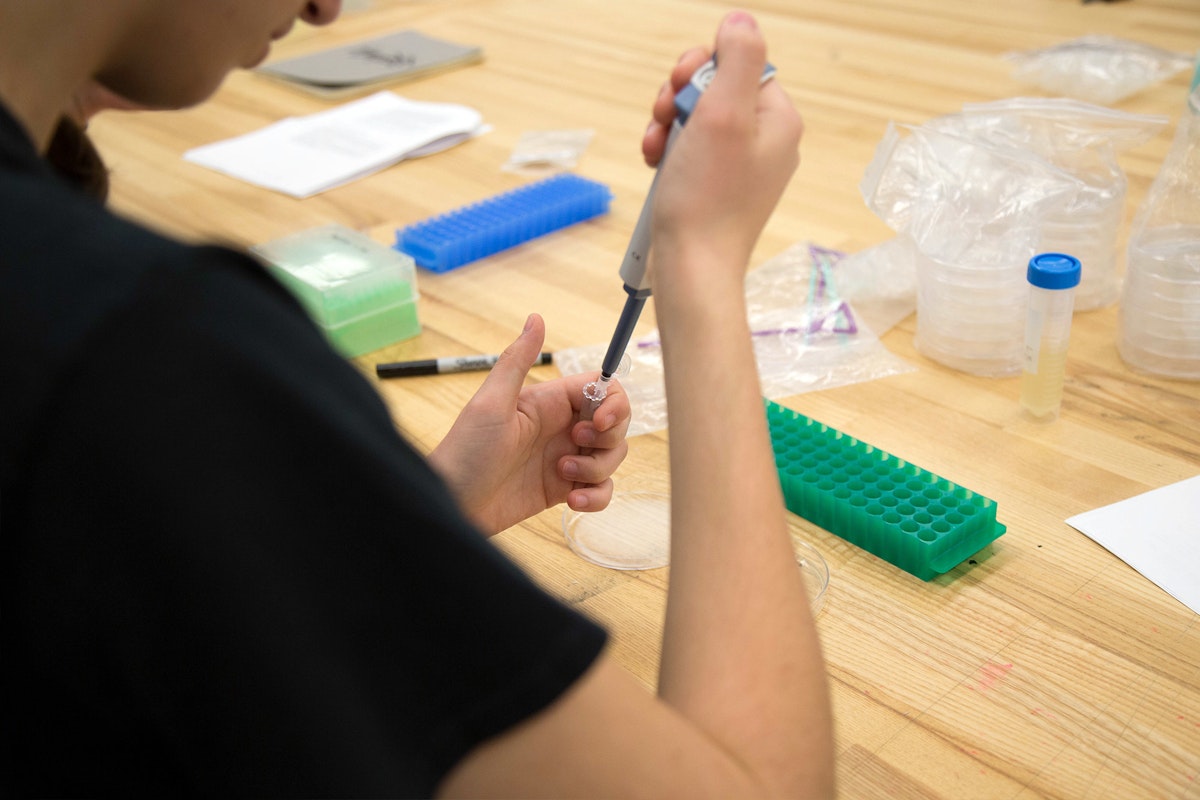
With a large medical research presence on campus and an emphasis on inquiry-led creative practice, Khan said it makes sense to explore these topics from an artistic perspective and see how they could fit into the Stamps curricula. “It's important for our students to think beyond the traditions of what art practice is,” he said. “You don't just draw the body. Now messing with the genetic material of the body is just as valid for the artist. That's the key thing I want to make sure filters into our students.”
On the last day of de Menezes’ workshop, participants were eager to see what developed in their agar-filled petri dish over the course of five days. With the overhead lights off, students and faculty observed the results through yellow tinted glasses. Under a blue LED light, green fluorescence shown from the dish, revealing a myriad of different shapes and patterns.
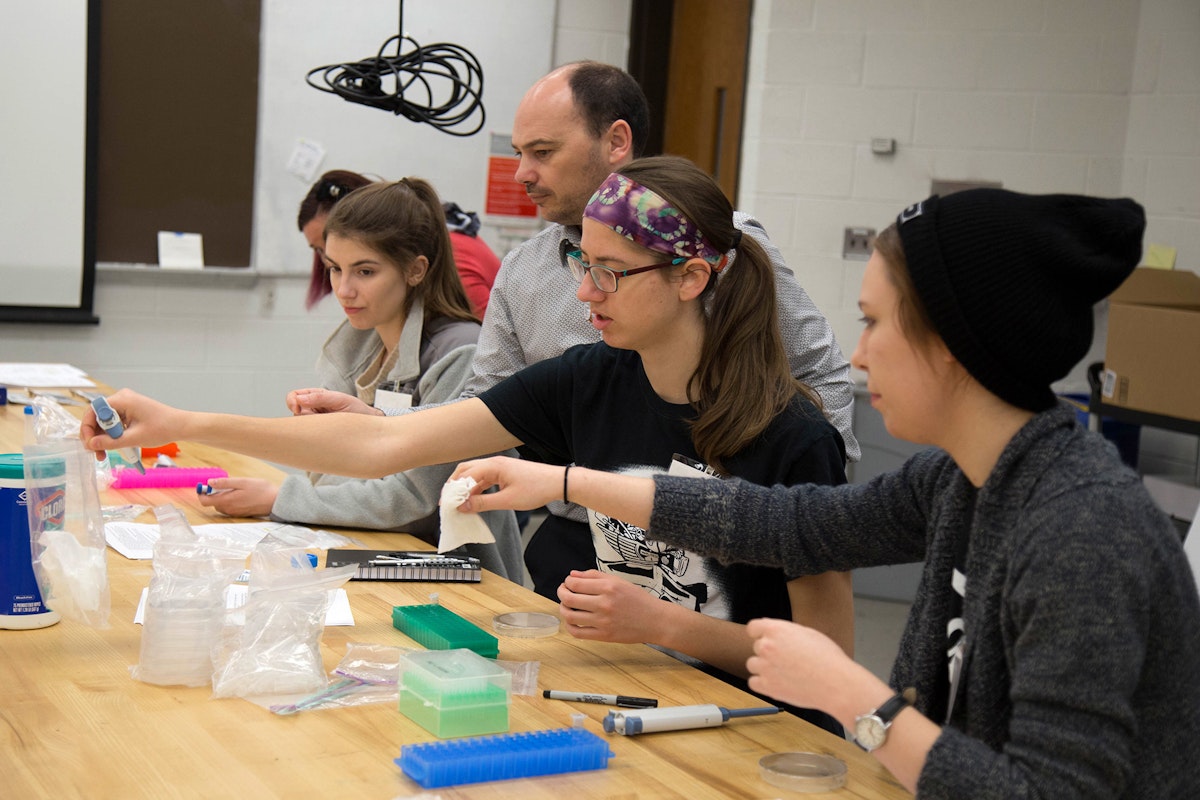
Madison Brow (Stamps BFA ’18), noted how the process of working with the bacteria and yeast — the manipulation needed to encourage specific growth patterns — was as important to the work as the final product. “Just looking at the plates as they are doesn't tell you a whole lot,” she said. “The weight of it is knowing the work we did before in order to get there.”
Fee Christoph (Stamps BFA ’20) appreciated the open-ended approach of looking into scientific concepts through an artist's lens. It's something she'd like to do more of in the future. “In science classes I've been in before, it's more like, ‘This is how it's laid out, and this is what we do to keep it well ordered, so we can agree on something,’” she said. “It was cool to have a situation where you're not supposed to agree and see what happens if you disagree with what is established and proven already.”

An artist living and working in Portugal, Marta de Menezes became fascinated with lab spaces and scientific processes through friends working in the sciences. For one of her best known, and first, bio-art pieces Nature? de Menezes altered the wing patterns of live butterflies by manipulating caterpillars to interfere with the normal wing development. She sees using life as a medium as a way to express concepts differently and add something to how we understand what life is. “For me, it's just so much more powerful that I end up doing very little of anything else, and I just always think about living material as a way to express the concepts I want to explore,” she says.
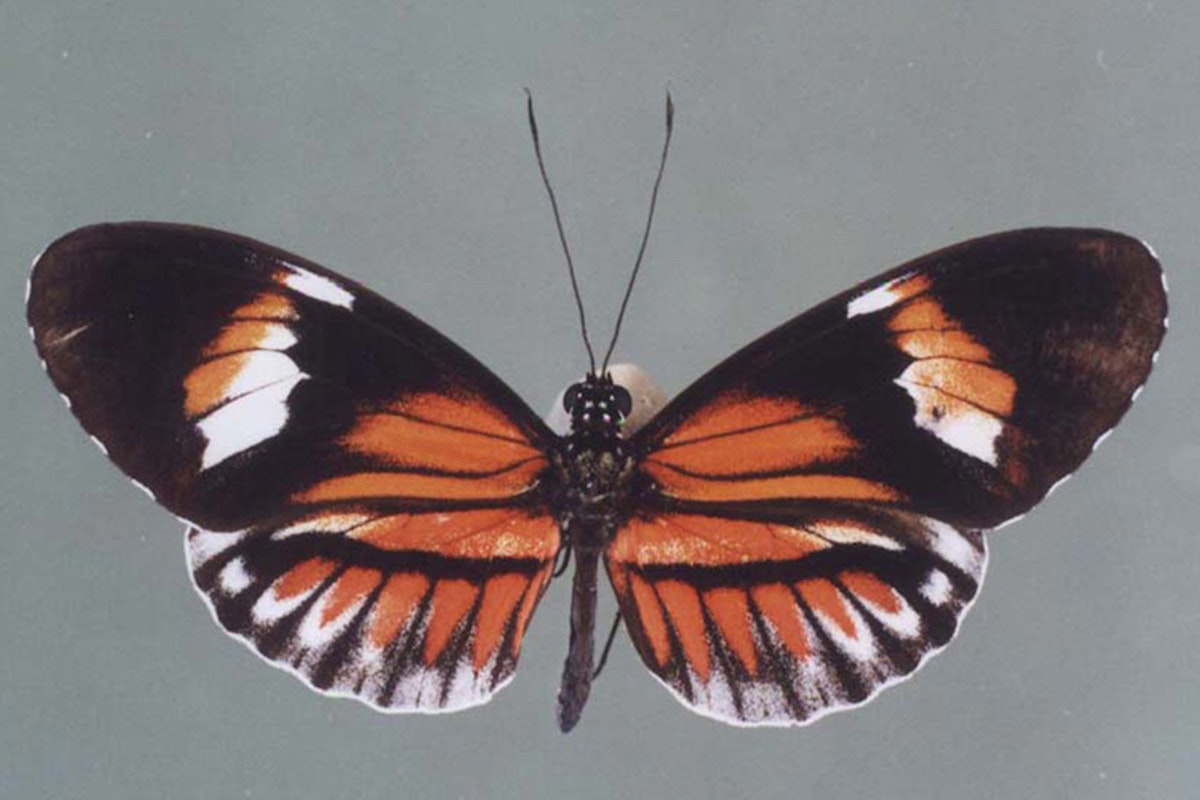
For current project Origin of Species, de Menezes is working with a team of scientists and a philosopher to explore how CRISPR might be used to not only “cut and paste” desirable and undesirable genes, but also to recover lost biodiversity and go “backward in the phylogenetic trees” of certain organisms, specifically drosophila flies and Mexican corn.
While CRISPR technology is at the forefront of a lot of scientific discussion and has been a focus of her work, de Menezes says it's these broader concepts and questions of why and how to use these techniques that are meaningful.
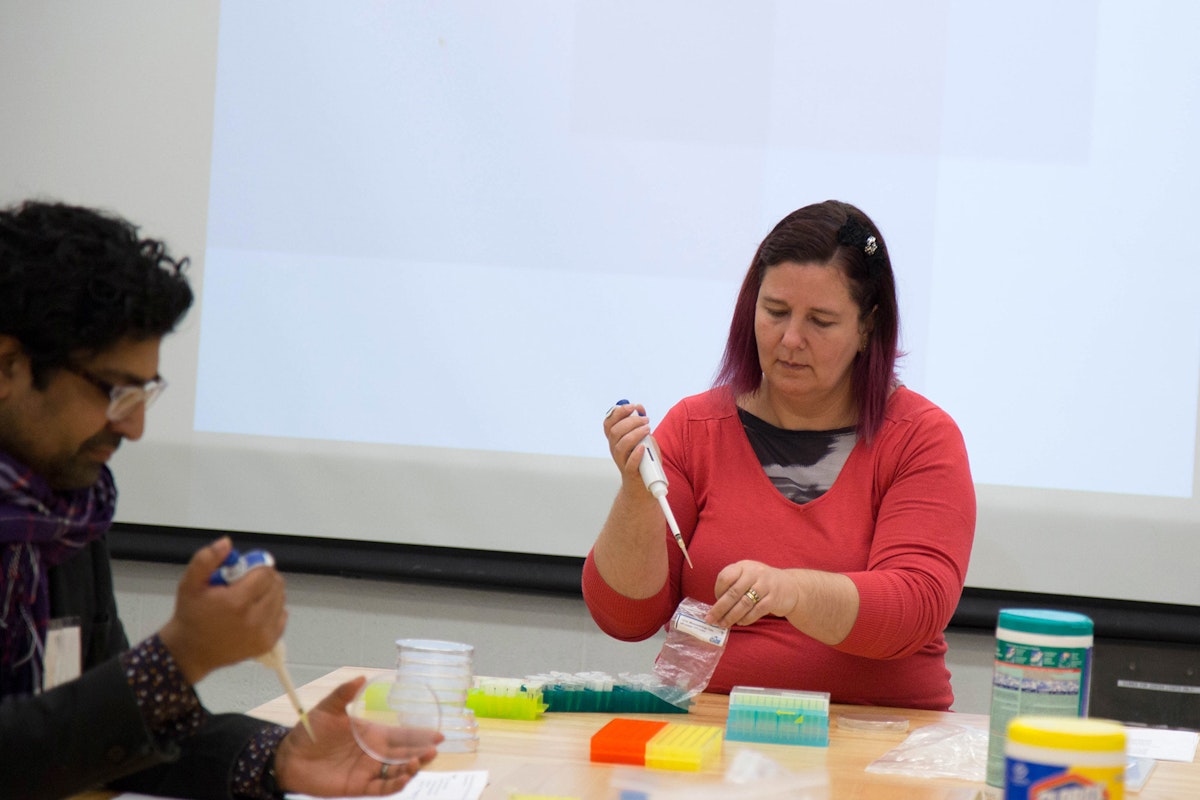
On the last day of the workshop, participants explored their own concepts — drawing and painting QR codes, circuit diagrams, and election maps with living cells.
For his final project, Stamps Professor Brad Smith proposed using attributes of his media that are hidden to the naked eye to make a comment on the “artifice of distinguishing.”
Smith has been working with a volunteer organization to help Middle Eastern refugees acquire drivers licenses and is amazed by how much documentation is needed to “illuminate just who they are.” He noted a parallel to his fluorescent yeast.
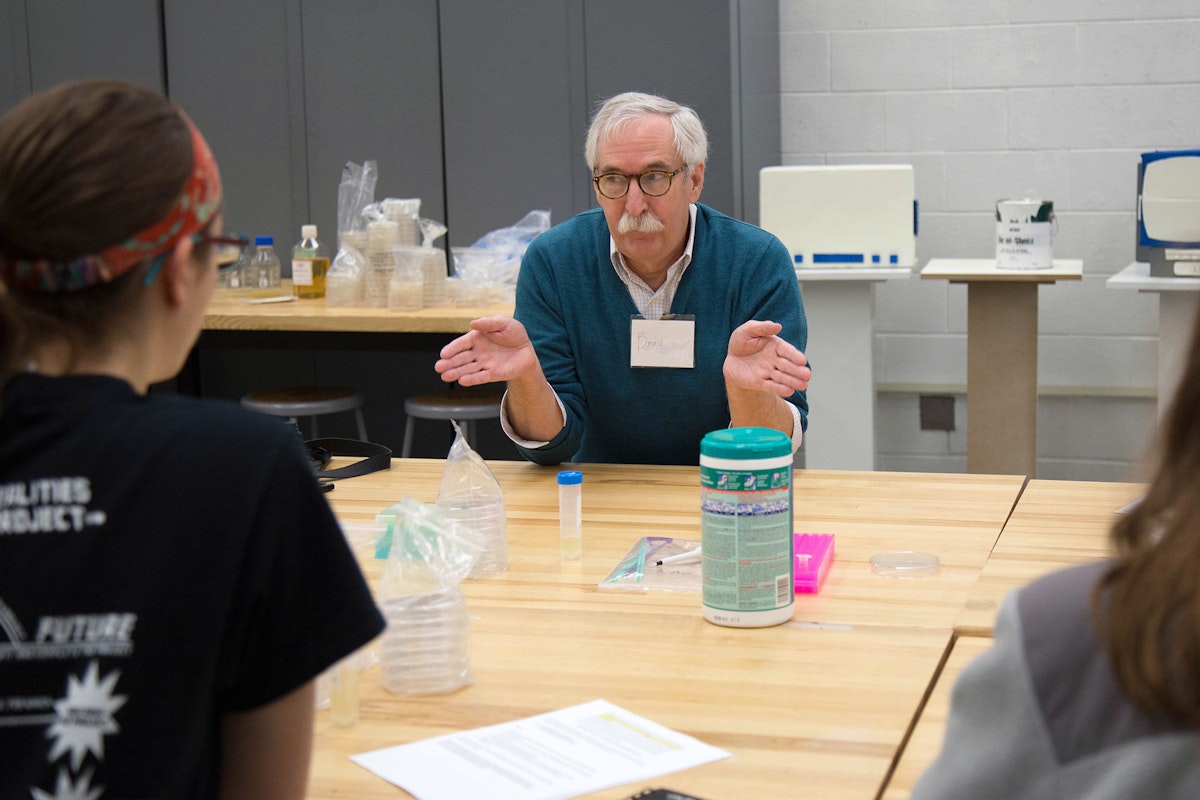
“When we look at this dish or that dish, there's not much difference. We can't tell them apart,” he said. “But as soon as I mediate it with [these glasses] plus this (light), I now distinguish them. Without these, I don't distinguish them. They're all yeast.”
To make his point, he planned to build a stand with two stationary petri dishes attached — one with fluorescent yeast and one with non-fluorescent — and a rotating arm with a light filter and a separate one with a UV light above them. “The only time you'll be able to distinguish yes or no is if they happen to coincide in just the right way or right moment,” he said.
Story by Eric Gallippo.
To learn more about the work of Marta de Menezes, visit martademenezes.com.